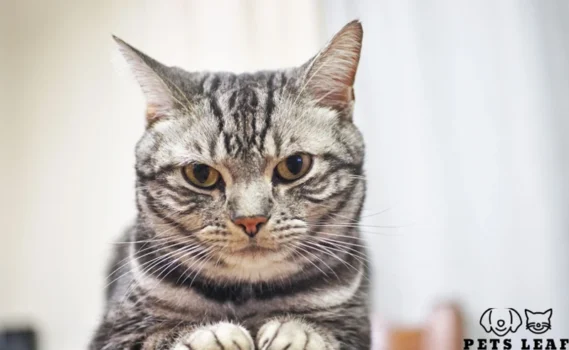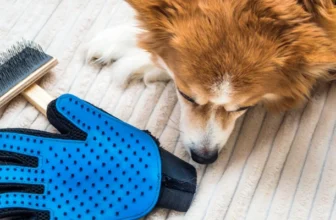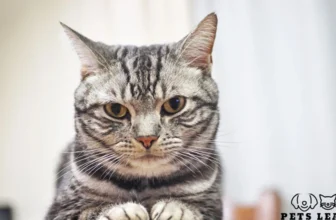Introduction
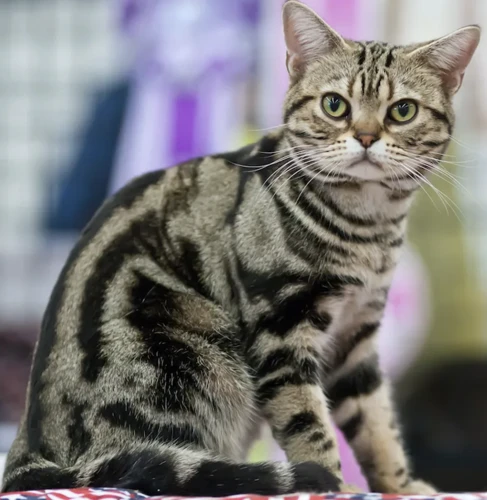
Cats are adorable pets that make excellent companions. However, like any living creature, they have their fair share of issues. One of the most common issues cat owners face is hairballs. Hairballs can be uncomfortable for cats and their owners, but the good news is that they can be prevented with regular grooming. In this article, we will share some grooming tips and other strategies for preventing hairballs in American Shorthairs.
What Are Hairballs?
Hairballs are masses of hair that accumulate in a cat’s stomach and intestines as a result of grooming. American Shorthair cats are particularly known for their tendency to develop hairballs. As they groom themselves, they swallow loose hair that gets trapped in their digestive system. This is because cats’ tongues contain barbs that are designed to help them clean their fur. These barbs catch loose hair and pull it out of their coat. Hairballs can cause a variety of health issues, including digestive problems, intestinal blockages, and even dehydration if they prevent fluids from properly passing through the digestive system. In this article, we will take a closer look at what hairballs are and how to prevent them in American Shorthair cats with regular grooming. To learn more about reducing shedding in American Shorthairs, check out our article on the best grooming tools for American Shorthairs.
Why Regular Grooming is Important
Regular grooming is crucial for preventing hairballs in American Shorthairs. These cats are known for being moderate to heavy shedders, and without proper grooming, their loose fur can accumulate in their digestive system and cause hairballs. Hairballs are not only unpleasant for your cat to vomit up, they can also be dangerous if they cause a blockage in the digestive tract.
To avoid such complications, it’s important to regularly groom your American Shorthair. Here are some benefits of regular grooming:
- Decreases hairballs: Regular grooming helps to remove loose and dead fur, preventing your cat from ingesting it and developing hairballs.
- Improves coat quality: Grooming stimulates blood flow and distributes natural oils throughout your cat’s coat, leaving it shiny and healthy.
- Reduces shedding: Shorthairs are known for shedding a lot, but grooming can help reduce the amount of fur they shed by removing it before it falls off on its own.
- Bonding time: Grooming your cat regularly can be a great bonding experience for the two of you.
Adopting a regular grooming routine for your American Shorthair can also help you stay aware of any changes in their coat, skin, or overall health. Plus, it’s a great opportunity to spend some quality time with your feline friend.
In addition to regular grooming, there are other steps you can take to prevent hairballs in your American Shorthair. For example, maintaining a healthy diet can reduce shedding and limit the amount of loose fur your cat ingests. Adequate exercise and hydration can also help your cat pass hairballs through their system more easily. Regular vet check-ups can ensure your cat is in good health and identify any potential issues early on.
If you want to learn more about how diet affects shedding in American Shorthairs, check out our article on diet and shedding in American Shorthairs. You may also be interested in our article on the best grooming tools for American Shorthairs with shedding issues or remedies for shorthair shedding. Additionally, stress can play a role in shedding in cats- learn more in our article on stress and shedding in Shorthairs.
Grooming Tips
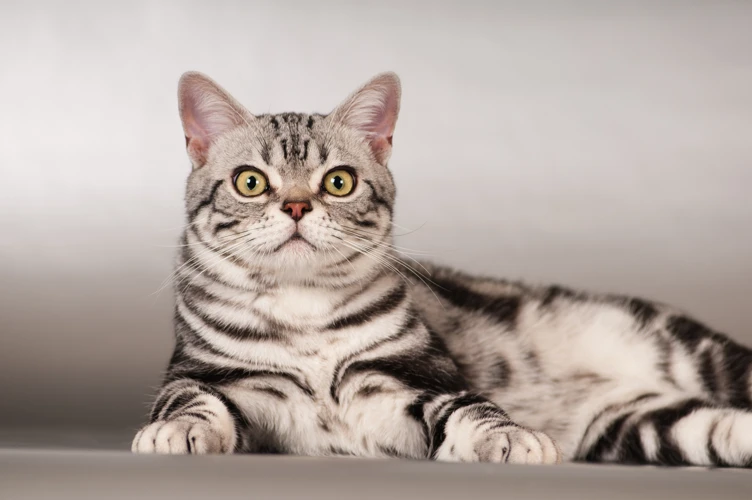
Keeping an American Shorthair cat well-groomed is necessary to prevent hairballs from forming. Hairballs can be uncomfortable for your pet and can lead to severe health issues. Grooming your cat regularly can prevent hairballs, and it also creates an excellent bonding opportunity between you and your pet. Let’s explore some tips on how to groom your American Shorthair cat, and how they tie in with the prevention of hairballs. But first, do you know why American Shorthairs are prone to hairballs? Find out more here.
Brushing Your Cat
Regular brushings are essential to preventing hairballs in American Shorthairs. Brushing your cat removes loose fur before it can be ingested and causes hairballs. Here are some tips to help you effectively brush your cat:
| Choose the Right Brush | There are many types of cat brushes available, including slicker brushes, bristle brushes, and rubber brushes. Choose the one that works best for your cat’s coat. A slicker brush is best for removing tangles and mats in long-haired cats, while a rubber brush is great for short-haired cats. |
| Start Slowly | If your cat is not used to being brushed, start slowly by petting and stroking them with the brush. This will help them get comfortable with the brush before you start brushing their fur. |
| Brush in the Direction of Hair Growth | Always brush your cat in the direction of hair growth to avoid pulling or hurting their skin. Start at the head and work your way down to the tail. |
| Focus on Problem Areas | Pay extra attention to problem areas, such as behind the ears, under the legs, and around the tail. These areas are more prone to matting and tangling. |
| Be Gentle | Be gentle when brushing your cat’s fur. If you encounter a knot or tangle, work it out slowly and carefully to avoid hurting your cat. |
| End on a Positive Note | When you’re finished brushing your cat, end on a positive note by giving them a treat or some extra love and attention. This will help them associate brushing with positive experiences. |
Remember, regular brushing is key to preventing hairballs in American Shorthairs. By following these tips, you can help keep your cat’s coat healthy and free of hairballs.
Bathing Your Cat
Cats are known for being clean animals, as they vigorously groom themselves throughout the day. However, sometimes regular grooming may not be enough to prevent hairballs. In such cases, bathing your cat can help reduce the amount of fur they ingest and decrease the likelihood of hairballs. Here are some tips for bathing your American Shorthair:
- Preparation: Before bathing your cat, make sure you have all the necessary supplies ready. This includes cat-friendly shampoo, towels, a non-slip mat for the bathtub, and a cup or handheld showerhead for rinsing. It’s also a good idea to trim your cat’s nails beforehand to avoid any scratches.
- Choosing the Right Shampoo: It’s important to use a shampoo specifically designed for cats, as human shampoos may be too harsh for their skin. Look for hypoallergenic or fragrance-free options. If your cat has skin allergies or conditions, consult with your vet before bathing them.
- Safety First: Cats may not enjoy being bathed, so it’s important to have a plan in case they become agitated. Avoid getting water in your cat’s ears and eyes, and never submerge their head underwater. Use a gentle voice and provide treats or toys to help keep your cat calm.
- Washing: Wet your cat’s fur with warm water and apply a small amount of shampoo, lathering gently. Be sure to wash all areas of the body, including the head, paws, and tail. Rinse thoroughly to avoid leaving residue on the fur.
- Drying: Use a towel to gently dry your cat’s fur. Avoid using a blow dryer, as the noise and heat may cause stress. If your cat tolerates it, you can use a low heat setting to help dry their fur. However, make sure to never leave them unattended near any electrical devices.
Bathing your cat may not be necessary on a regular basis, but it can be a helpful tool in preventing hairballs. If your cat is particularly prone to hairballs, talk to your vet about how often you should bathe them and whether there are any other grooming techniques that may be helpful.
Trimming Your Cat’s Hair
Regular grooming is essential for keeping your American Shorthair’s coat looking healthy and shiny, but sometimes brushing and bathing alone may not be enough to prevent hairballs. Trimming your cat’s hair is another great way to keep your pet’s coat tangle-free and reduce the amount of hair they ingest during self-grooming.
Why should you trim your cat’s hair? When your cat sheds, loose hair can easily become tangled in their coat, leading to matting and knots. These tangles can trap even more hair, as well as dirt and debris, creating a messy and uncomfortable situation for your feline friend. Not only is this unsightly, but it can also contribute to the formation of hairballs, as your cat will inevitably ingest some of the trapped hair during grooming.
How to trim your cat’s hair: Trimming your cat’s hair may seem intimidating, but with the right tools and a little patience, it can be a simple and straightforward process. Keep in mind that not all cats need their hair trimmed, and some may require professional grooming if their coat is very thick or heavily matted. However, if your American Shorthair has a longer coat that tends to develop tangles, then a DIY trim may be a good solution to help prevent hairballs.
- Start by using a comb to gently detangle any knots in your cat’s fur.
- Next, use a pair of scissors designed specifically for pet grooming to trim any long or overgrown hair around their face, ears, and paws. Be sure to use caution when trimming around sensitive areas like the eyes and ears, and use scissors with curved blades to help prevent accidental nicks or cuts.
- If your cat has particularly thick or matted areas of fur, consider using clippers to carefully remove the hair. Again, use caution and be especially careful around delicate areas like the stomach and genitals.
- Finally, give your cat a thorough brushing to make sure there are no remaining tangles or loose hairs.
When to trim your cat’s hair: The frequency of your cat’s hair trimming will depend on their coat length and how quickly it grows. Some American Shorthairs may only need a trim once or twice a year, while others may require more regular grooming to prevent matting and tangles. Keep an eye on your cat’s coat and schedule trims as needed to help maintain their health and comfort.
Trimming your American Shorthair’s hair can be an effective way to prevent hairballs and keep their coat looking and feeling great. With the right tools and techniques, you can help your feline friend stay healthy, happy, and mat-free.
Using Hairball Prevention Products
Hairball prevention products can be a useful aid to help reduce the formation of hairballs in your American Shorthair. There are a variety of products that can be used, including hairball treats, hairball gels and pastes, and hairball control cat food.
Here’s a table to help you compare and understand the benefits of hairball prevention products:
| Product Type | Benefits |
|---|---|
| Hairball Treats | These treats are designed to help cats pass hair through their digestive system, reducing the likelihood of hairballs. They often contain fiber and other ingredients that can help promote healthy digestion. |
| Hairball Gels and Pastes | These products are typically added to your cat’s food or given as a separate daily supplement. Hairball gels and pastes contain ingredients that help lubricate the digestive tract, making it easier for hair to pass through your cat’s system. |
| Hairball Control Cat Food | This type of cat food is specifically formulated with a combination of natural fibers and other ingredients to help support healthy digestion and prevent hairballs. These foods often have added benefits, such as helping to maintain a healthy weight or supporting urinary tract health. |
While these products can be helpful in preventing hairballs, it is important to remember that they should not be used as a substitute for regular grooming practices. Regular brushing and grooming is still the most effective way to remove loose hair and prevent hairballs from forming. Additionally, some cats may have allergies or sensitivities to certain hairball prevention products, so it is important to consult with your veterinarian before introducing any new products or supplements to your cat’s diet.
Other Tips
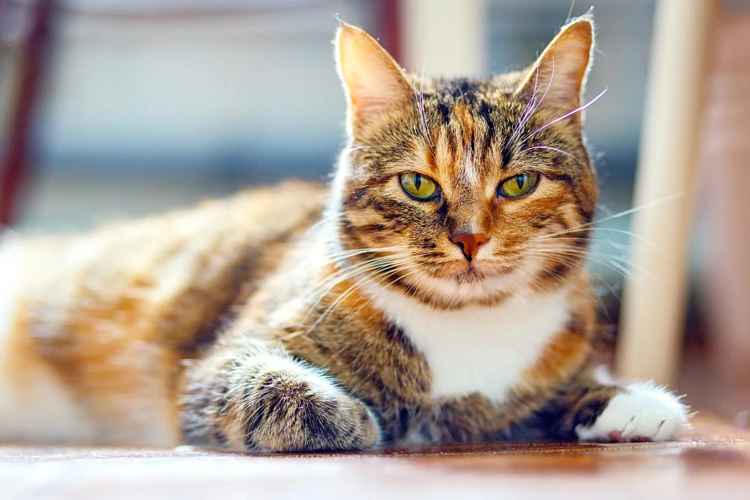
Taking care of your American Shorthair’s grooming needs is essential for preventing hairballs, but there are also other measures you can take to ensure your cat stays healthy and hairball-free. By incorporating these additional tips into your cat’s routine, you can reduce the risk of hairballs and maintain your cat’s overall well-being. Let’s explore some of the other strategies you can use to help your cat stay healthy and happy.
Feeding Your Cat a Healthy Diet
The quality of the food you give to your American Shorthair is paramount in preventing hairballs. Feeding your cat a healthy diet can help reduce the frequency and severity of hairball occurrence. Here are some important things to consider when feeding your cat:
| Food Type | Importance |
|---|---|
| Wet food | Wet food can help your cat stay hydrated, which is important in reducing hairballs. It also contains more moisture and protein than dry food. |
| High-quality ingredients | Choose cat food that contains high-quality protein sources, like real meat. Avoid foods that contain fillers or byproducts, as they may be more difficult for your cat to digest. |
| Fiber | Fiber is important in maintaining a healthy digestive system. Feed your cat foods that contain natural sources of fiber, such as sweet potatoes, pumpkin, or beet pulp. |
| Portion control | Overfeeding can lead to weight gain and a slower digestive system, both of which can contribute to hairball formation. Follow the recommended daily feeding guidelines based on your cat’s weight and activity level. |
In addition to a healthy diet, you can also consider adding supplements to your cat’s food that contain ingredients such as omega-3 fatty acids and vitamin E. These can help promote healthy skin and a shiny coat, which can reduce the amount of shedding and therefore help reduce hairball formation.
Again, it is important to consult with your veterinarian to determine the best diet plan for your American Shorthair, as there may be specific dietary considerations based on their age, weight, or any underlying health conditions.
Encouraging Exercise and Hydration
Keeping your American Shorthair cat hydrated and active is crucial for preventing hairballs. Drinking plenty of water can help lubricate the digestive system and facilitate the passage of hairballs. To encourage your cat to drink water, make sure there is always a fresh bowl of water available in a easily accessible location. Additionally, consider investing in a drinking fountain, which can entice cats to drink more water due to the sound and movement of the water.
Exercise is also an important factor in preventing hairballs. Regular exercise helps stimulate digestion and promote bowel movements, which can help your cat pass hairballs more easily. Provide your American Shorthair with a range of toys and scratching posts to keep them active and engaged. Play sessions with your cat using toys like feathers or laser pointers can also be a great way to get them moving and encourage activity.
Introducing an indoor garden can also be a great way to stimulate your cat’s exercise. Consider creating a space with cat-friendly plants, like catnip, for them to explore and play in. It is important to ensure that the plants are not toxic to your cat before introducing them into your home.
Maintaining a healthy weight is also key to encouraging exercise and preventing hairballs. Overweight cats may not be as active and are more likely to experience digestive issues. Be sure to monitor your cat’s weight and adjust their diet and exercise routine accordingly.
Encouraging exercise and hydration is an important aspect of preventing hairballs in American Shorthairs. A combination of providing fresh water, interactive toys and scratching posts, and possibly creating an indoor garden can help keep your cat active and healthy.
Regular Vet Check-Ups
One of the most important things you can do to keep your American Shorthair healthy and hairball-free is to make sure they have regular vet check-ups. Veterinarians are trained to spot potential health problems before they become serious, and regular check-ups can help ensure that your cat stays healthy both inside and out. During these visits, your vet will check your cat’s overall health, including their skin and coat. They can also offer advice on how to care for your cat’s specific needs and recommend dietary changes or supplements that may help prevent hairballs.
Here are some of the things your vet might suggest during a check-up:
| Recommendation | Description |
|---|---|
| Dietary Changes | Your vet may suggest changing your cat’s food to one that is specially formulated to reduce hairball formation. They may also recommend feeding smaller, more frequent meals or adding more fiber to your cat’s diet. |
| Supplements | There are a variety of supplements available that can help reduce hairballs. Your vet can recommend a supplement that is best suited for your cat and their specific needs. |
| Medication | In rare cases, your vet may prescribe medication to help alleviate hairball-related symptoms. These medications are usually used in conjunction with other preventative measures. |
Even if your American Shorthair seems perfectly healthy, it’s important to schedule regular check-ups with your veterinarian. A once-a-year exam is usually recommended for adult cats, although your vet may recommend more frequent visits if your cat has specific health concerns. Remember, prevention is always easier than treatment, so don’t wait until your cat is showing signs of sickness to schedule a visit with their vet.
Signs of Hairball Problems
As much as you try to prevent hairballs in your American Shorthair through regular grooming, sometimes they could still occur. Since hairballs can pose a serious health risk to your furry friend, it’s important to keep an eye out for any potential signs of hairball problems. By recognizing these signs early on, you can take the necessary steps to help your cat pass the hairball without any complications. Here are some red flags to watch out for that may indicate that your cat is having trouble with hairballs.
Coughing and Gagging
Symptoms of hairball problems can be concerning for any cat owner. One of the most common signs of hairball issues is coughing and gagging. If you notice your American Shorthair making frequent hacking sounds, it may be a sign that they’re trying to expel a hairball. Sometimes, they may even go into what looks like a coughing fit as they try to get the hairball out.
To help your cat alleviate this issue, you can try using several methods. One option is to give your cat a hairball remedy or gel. These products contain ingredients that help lubricate your cat’s digestive system and make it easier for them to pass hairballs. You can also help by giving your cat regular grooming sessions to minimize the amount of hair they ingest.
However, if your cat continues to gag and doesn’t bring up the hairball after continuous attempts, take them to the vet. Your cat may be suffering from a more severe problem, and it’s always best to be safe rather than sorry. In addition to coughing and gagging, there are other signs of hairball problems to watch out for, which we’ll explore in more detail below.
Loss of Appetite and Vomiting
If your American Shorthair is experiencing hairball problems, one of the signs to watch out for is a loss of appetite and vomiting. Hairballs that do not pass through the digestive system can irritate the stomach lining and cause your cat to feel sick.
| Signs of Hairball Problems: | What to Look For: |
|---|---|
| Loss of appetite | If your cat is not interested in eating or has a sudden decrease in appetite, it could be a sign of hairball problems. |
| Vomiting | Your cat may vomit up hairballs or other substances if they are experiencing digestive issues caused by hairballs. |
To prevent hairballs from causing digestive discomfort, you should make sure to groom your American Shorthair regularly. In addition to grooming, encouraging exercise and providing a healthy diet can help keep your cat’s digestive system in good shape. If you notice any of the signs of hairball problems listed above, you should consult your veterinarian to make sure there are no underlying health issues causing the problem.
Conclusion
In conclusion, preventing hairballs in American Shorthairs with regular grooming is an essential part of maintaining their health and happiness. By following the grooming tips mentioned in this article, such as brushing, bathing, and trimming your cat’s hair, you can greatly reduce the likelihood of hairballs forming in their digestive system.
Moreover, feeding your cat a healthy diet, encouraging exercise and hydration, and scheduling regular vet check-ups are other important factors to consider when preventing hairballs. It’s crucial to keep an eye out for signs of hairball problems, such as coughing and gagging, loss of appetite, and vomiting, and seek veterinary advice immediately if you notice any of these symptoms.
By taking proactive steps to prevent hairballs and maintaining your American Shorthair’s overall well-being, you can help them lead a happy and healthy life. Remember, a healthy cat is a happy cat, and regular grooming plays a vital role in achieving this goal. So, make sure to groom your American Shorthair regularly and keep them in tip-top shape!
Frequently Asked Questions
How often should I groom my American Shorthair?
It is recommended to groom your American Shorthair at least once a week to prevent the formation of hairballs.
What types of brushes are best for grooming an American Shorthair?
Slicker brushes and deshedding tools are the best types of brushes for grooming American Shorthairs as they effectively remove loose fur and reduce the risk of hairballs.
Can I use human shampoo on my American Shorthair?
No, it is not recommended to use human shampoo on your American Shorthair. Instead, opt for a specially formulated cat shampoo that is gentle on their sensitive skin.
Are there any foods that can help prevent hairballs in my cat?
Yes, foods with high levels of fiber can help prevent hairball formation by aiding in digestion and moving hair through the digestive system.
Is it necessary to trim my cat’s hair to prevent hairballs?
No, it is not necessary to trim your cat’s hair to prevent hairballs. However, trimming their hair can reduce the amount of loose fur they ingest while grooming themselves.
Can hairball prevention products be harmful to my cat?
No, hairball prevention products are specifically formulated to be safe for cats. However, it is important to follow the product instructions carefully.
How do I know if my cat is dehydrated?
Some signs of dehydration in cats include dry gums, sunken eyes, lethargy, and a loss of skin elasticity.
What kinds of toys can I use to encourage exercise in my cat?
Interactive toys like laser pointers and wand toys can encourage exercise in cats by stimulating their natural hunting instincts. Catnip toys can also help to increase their activity levels.
Can hairballs be a sign of a more serious health issue?
Yes, frequent hairballs can sometimes indicate an underlying health issue such as gastrointestinal problems or a thyroid condition. It is important to bring your cat to the vet for regular check-ups to ensure their overall health and wellness.
How can I make sure my cat is getting all the nutrients they need in their diet?
Consult with your veterinarian to determine the best diet for your cat’s individual needs. Feeding a balanced and high-quality diet can help ensure that your cat is getting all the nutrients they need.

